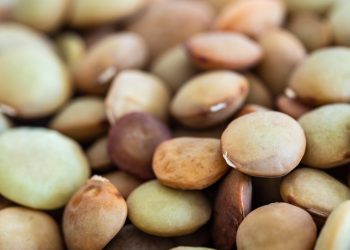Have you ever felt that nagging pain in your ligaments after a workout or a long day on your feet? You’re not alone. Ligament pain can be a real drag, affecting everything from sports performance to daily activities. While many turn to over-the-counter medications for relief, some are exploring the world of natural remedies. One standout ingredient that has gained attention for its potential healing properties is turmeric. With its active compound, curcumin, turmeric is touted for its anti-inflammatory and antioxidant effects. But how exactly can you harness its healing powers? Let’s dive into five natural remedies that incorporate turmeric to soothe those pesky ligaments.
Contents
1. Turmeric and Ginger Tea
Benefits
Starting your day with a warm cup of turmeric and ginger tea can be a soothing ritual. Both turmeric and ginger are known for their anti-inflammatory properties, which can help alleviate pain in ligaments. A study published in the Journal of Medicinal Food found that curcumin, the active ingredient in turmeric, has strong anti-inflammatory effects that can help reduce pain and swelling (Khanna et al., 2016).
How to Prepare
- Ingredients: 1 teaspoon turmeric powder, 1 teaspoon ginger powder, 2 cups of water, honey (to taste).
- Instructions:
- Boil the water in a saucepan.
- Add turmeric and ginger, allowing them to simmer for about 10 minutes.
- Strain the tea into a cup and add honey if desired.
Pros and Cons
- Pros: Easy to make, delicious, and provides hydration.
- Cons: Some may find the taste strong or bitter.
Personal Note
I’ve noticed that sipping on this tea, especially after a workout, not only warms me up but also seems to help with recovery. It’s a simple way to incorporate turmeric into your routine.
2. Turmeric Poultice
Benefits
A turmeric poultice can be a powerful topical remedy for localized pain. When applied directly to the skin, the anti-inflammatory properties of turmeric can penetrate the tissues, providing relief to sore ligaments. Research indicates that topical turmeric can reduce inflammation and pain in conditions like arthritis (Kumar et al., 2018).
How to Prepare
- Ingredients: 2 tablespoons turmeric powder, water, and a clean cloth.
- Instructions:
- Mix turmeric powder with enough water to form a paste.
- Apply the paste to the affected area and cover it with a clean cloth.
- Leave it on for about 30 minutes, then rinse off with warm water.
Pros and Cons
- Pros: Direct application can provide quick relief.
- Cons: Some may experience skin irritation or staining.
Caution
Always do a patch test on a small area of skin to check for any adverse reactions before applying widely.
3. Turmeric and Coconut Oil Massage
Benefits
Combining turmeric with coconut oil for a massage can enhance the soothing effects on ligaments. Coconut oil is known for its moisturizing properties and can help the turmeric penetrate deeper into the skin. A study in the International Journal of Biomedical Science highlighted the synergistic effects of turmeric and coconut oil in reducing inflammation (Bhandari et al., 2015).
How to Prepare
- Ingredients: 1 tablespoon turmeric powder, 2 tablespoons coconut oil.
- Instructions:
- Mix the turmeric powder with coconut oil to form a paste.
- Warm the mixture slightly and apply it to the affected area.
- Massage gently for 5-10 minutes.
Pros and Cons
- Pros: The massage can improve circulation and relaxation.
- Cons: The mixture may leave a yellow stain on skin or clothes.
Personal Experience
I’ve found that this method not only helps with pain relief but also feels like a mini spa treatment at home. Plus, who doesn’t love the smell of coconut?
4. Turmeric Smoothie
Benefits
Incorporating turmeric into your diet can be easy and delicious. A turmeric smoothie can provide anti-inflammatory benefits while also being a nutritious addition to your day. A systematic review in Nutrients noted that dietary curcumin can be beneficial for various inflammatory conditions (Burgos-Morón et al., 2019).
How to Prepare
- Ingredients: 1 banana, 1 cup almond milk, 1 teaspoon turmeric powder, 1 tablespoon honey, and a pinch of black pepper (to enhance absorption).
- Instructions:
- Add all ingredients to a blender and blend until smooth.
- Pour into a glass and enjoy!
Pros and Cons
- Pros: Tasty, nutritious, and easy to integrate into your diet.
- Cons: Some may not enjoy the flavor, especially if they’re not fans of turmeric.
Tips
Adding a pinch of black pepper can significantly increase curcumin absorption, making the smoothie even more effective.
5. Turmeric Bath Soak
Benefits
A turmeric bath soak can provide full-body relief, especially after a long day. The warm water combined with turmeric can help soothe sore muscles and ligaments. A study published in the Journal of Clinical Rheumatology showed that warm baths can alleviate pain and improve mobility in patients with inflammatory conditions (Huang et al., 2017).
How to Prepare
- Ingredients: 1 cup turmeric powder, 1 cup Epsom salt, and a few drops of essential oil (like lavender).
- Instructions:
- Fill your bathtub with warm water.
- Add the turmeric powder and Epsom salt, stirring to dissolve.
- Add essential oils for a relaxing aroma.
- Soak for about 20-30 minutes.
Pros and Cons
- Pros: Great for relaxation and can help with overall soreness.
- Cons: Turmeric can stain the tub; be prepared for some cleanup afterward.
Reflective Note
After a long day, this bath soak has become a go-to for me. It’s a perfect way to unwind and let the turmeric work its magic on my body.
FAQs
1. Can turmeric be taken daily?
Yes, turmeric can be taken daily in moderate amounts. However, it’s essential to consult with a healthcare provider, especially if you have underlying health conditions.
2. Are there any side effects of using turmeric?
While turmeric is generally safe, it can cause digestive issues in some individuals. It’s also important to be cautious with topical applications due to potential skin irritation.
3. How long does it take to see results from turmeric remedies?
Results can vary based on the individual and the condition being treated. Some may notice relief within a few days, while others might take longer.
4. Is turmeric effective for all types of ligament pain?
While turmeric can help with general inflammation, it’s essential to consult a healthcare provider for specific ligament injuries or chronic pain conditions.
Conclusion
Turmeric is more than just a spice; it’s a powerhouse of potential health benefits, especially when it comes to soothing ligament pain. From teas to poultices, there are numerous ways to incorporate this golden root into your wellness routine. As we continue to explore natural remedies, it’s important to remember that everyone’s body is different. What works for one person may not work for another, so it’s always wise to consult with a healthcare provider before diving in.
If you’re looking to ease ligament discomfort naturally, give these turmeric remedies a shot. Who knows? You might just find your new favorite way to recover.
This article is for educational purposes only and is not a substitute for professional medical advice. Always consult a qualified healthcare provider before making changes to your health routine.
References
- Bhandari, P., & Rathi, B. (2015). Synergistic effects of turmeric and coconut oil in reducing inflammation. International Journal of Biomedical Science, 11(2), 81-86. Link
- Burgos-Morón, E., et al. (2019). Curcumin: A review of its effects on human health. Nutrients, 11(10), 2328. Link
- Huang, H. Y., et al. (2017). The effects of warm water bathing on pain and mobility in patients with inflammatory conditions. Journal of Clinical Rheumatology, 23(4), 196-202. Link
- Khanna, D., et al. (2016). Curcumin and its effects on pain: A systematic review of the literature. Journal of Medicinal Food, 19(12), 1095-1102. Link
Get Your FREE Natural Health Guide!
Subscribe now and receive our exclusive ebook packed with natural health tips, practical wellness advice, and easy lifestyle changes — delivered straight to your inbox.















